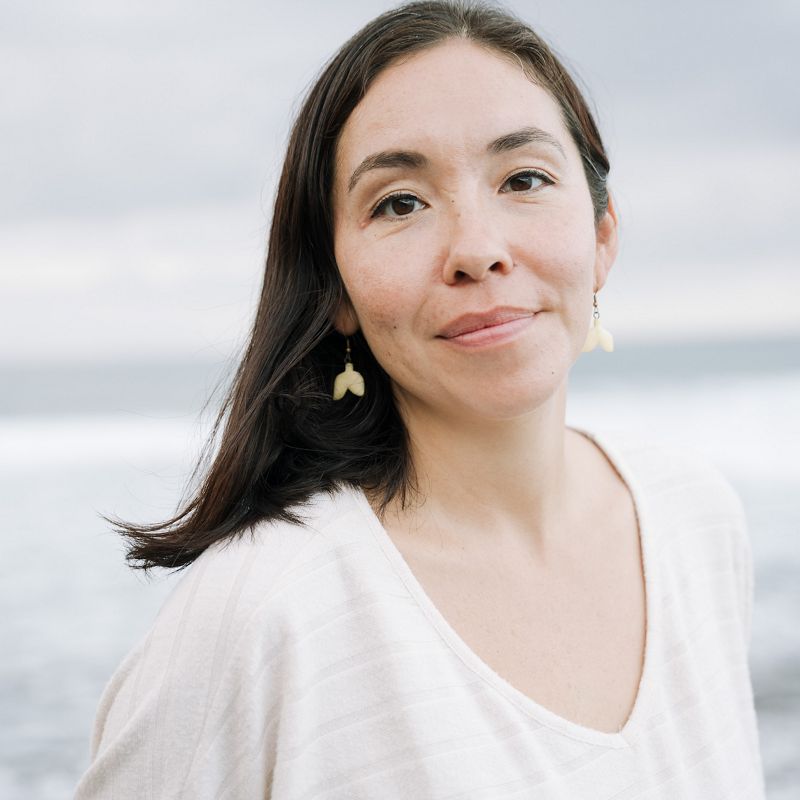
Andrea Akall'eq Burgess: Sharing Traditional Knowledge
Burgess is helping TNC bring more women from Indigenous and local communities into decision-making roles in conservation.
Spring 2023
This web page includes quotes and personal opinions expressed by individuals, which do not necessarily reflect the views or positions of The Nature Conservancy.
You are TNC’s Indigenous Peoples & local communities director, but how does your personal background inform your perspective on the role of women in conservation?
I’m Yup’ik Inuit, from southwestern Alaska. In our culture, women have an important role in terms of the continuity of our culture, our ways of knowing, and our connection to the lands and waters. We see the world’s plants, animals and other beings as relatives—not as resources. And the teachings for how to be in right relation and to be good relatives come from our mothers and grandmothers. Women play an important role, even a sacred role.
How can TNC and other groups support the important role of Indigenous women in conservation?
In some places, through colonization, women have been left behind when there are economic opportunities from conservation that take place in local communities. So having a gender equity focus ensures that there are strong rights in place for women. Sometimes that includes working with local governments and making sure there are legal pathways for women to work, and to be compensated equitably for the work that they’re doing. It also means making sure that women’s voices show up in resource management decisions.
We also give women opportunities to travel and do learning exchanges. When women are able to visit other places in the world and see what women are doing there, they feel empowered and they feel like the world is limitless.
In some places, putting women in leadership roles like you describe may challenge cultural norms. How do you navigate those issues?
We begin by creating a safe space, usually a community gathering of women who are invited and women from TNC, and create an opportunity to listen. What is their vision? In an ideal world, what would they like to see in terms of caring for the environment and for their community? Then there is some kind of conversation with male leaders in the community—whether that’s religious leaders, elected leaders or tribal leaders—to talk through the direction that women want to go. We give them time to sit with it, maybe have private, in-home discussions, and then come back to the table and co-create what makes the most sense for that community context.
Can you give an example of what that looks like in practice?
I recently visited Lamu Island and Pate Island in Kenya … where the coastal communities have a say in how their resources are being managed. It was the women in these villages who decided they needed to come together and be smarter about how octopi were being harvested. They realized that if they closed the fishery for three to four months, and stopped illegal harvesting during that time, then the quality and size of the octopi would increase.
These women were able to come together, make a collective decision and negotiate with the men and the other fishers to make sure that they were on board with this community plan. That’s a strong example of how women as leaders were able to think collectively and holistically about what was in the best interest of their entire coastal villages.
What can the global conservation movement learn from TNC’s work with women in Indigenous and local communities?
One of the core teachings that local and Indigenous women embody is the sense of relationship and being in balance. Right now, our world is so far out of balance that it can feel like there’s no solution. I think the world desperately needs to know that this [relationship] hasn’t been broken, that there are still pockets of the world where traditional values and knowledge inform how people live, how they make decisions, how they care for one another, how they are in relationship with the natural world. I think The Nature Conservancy has a role to play in bringing human wellbeing and traditional knowledge into how we make our science-based decisions, where we choose to invest, how we choose to partner and what stories we decide to tell the world.